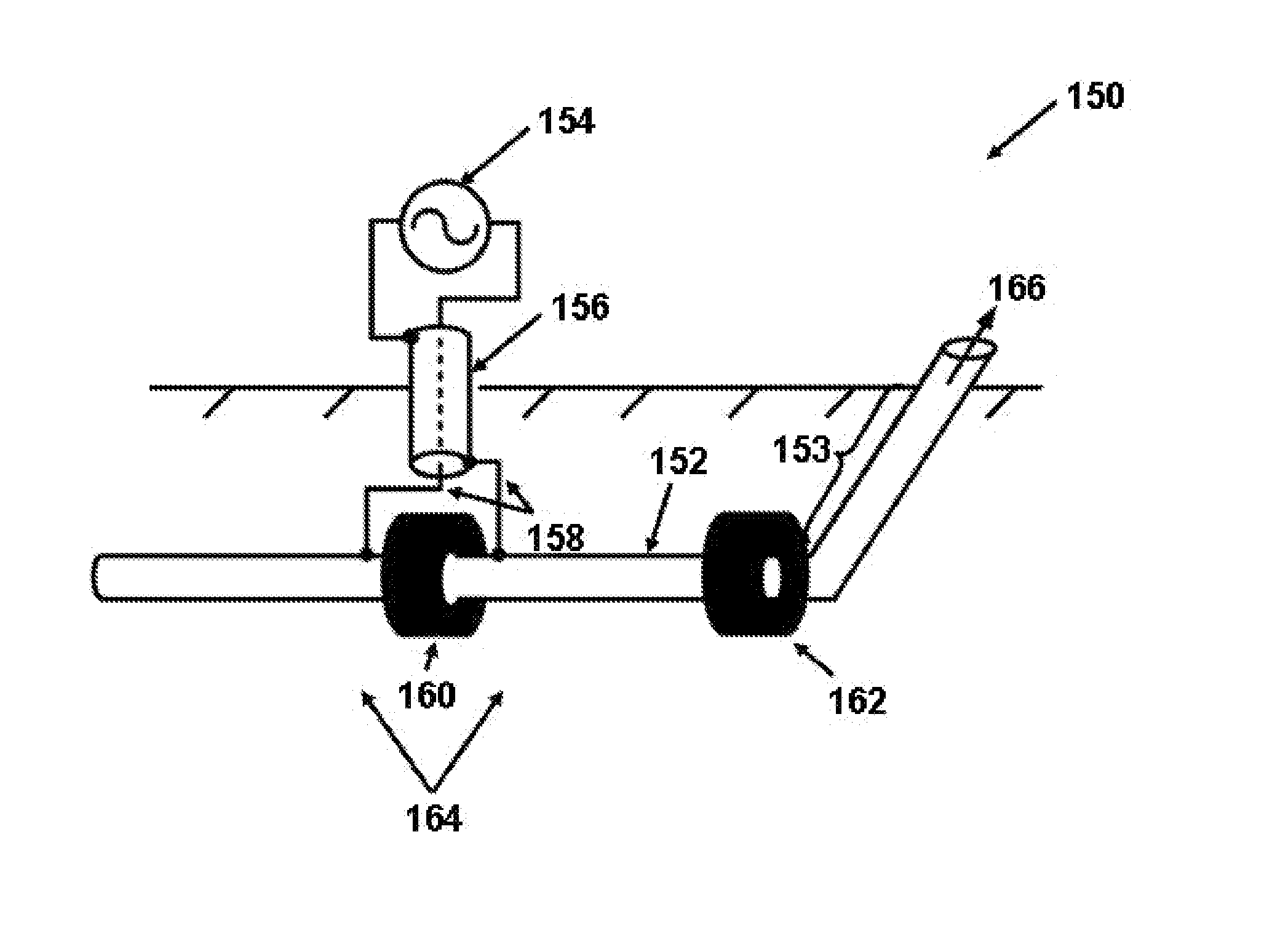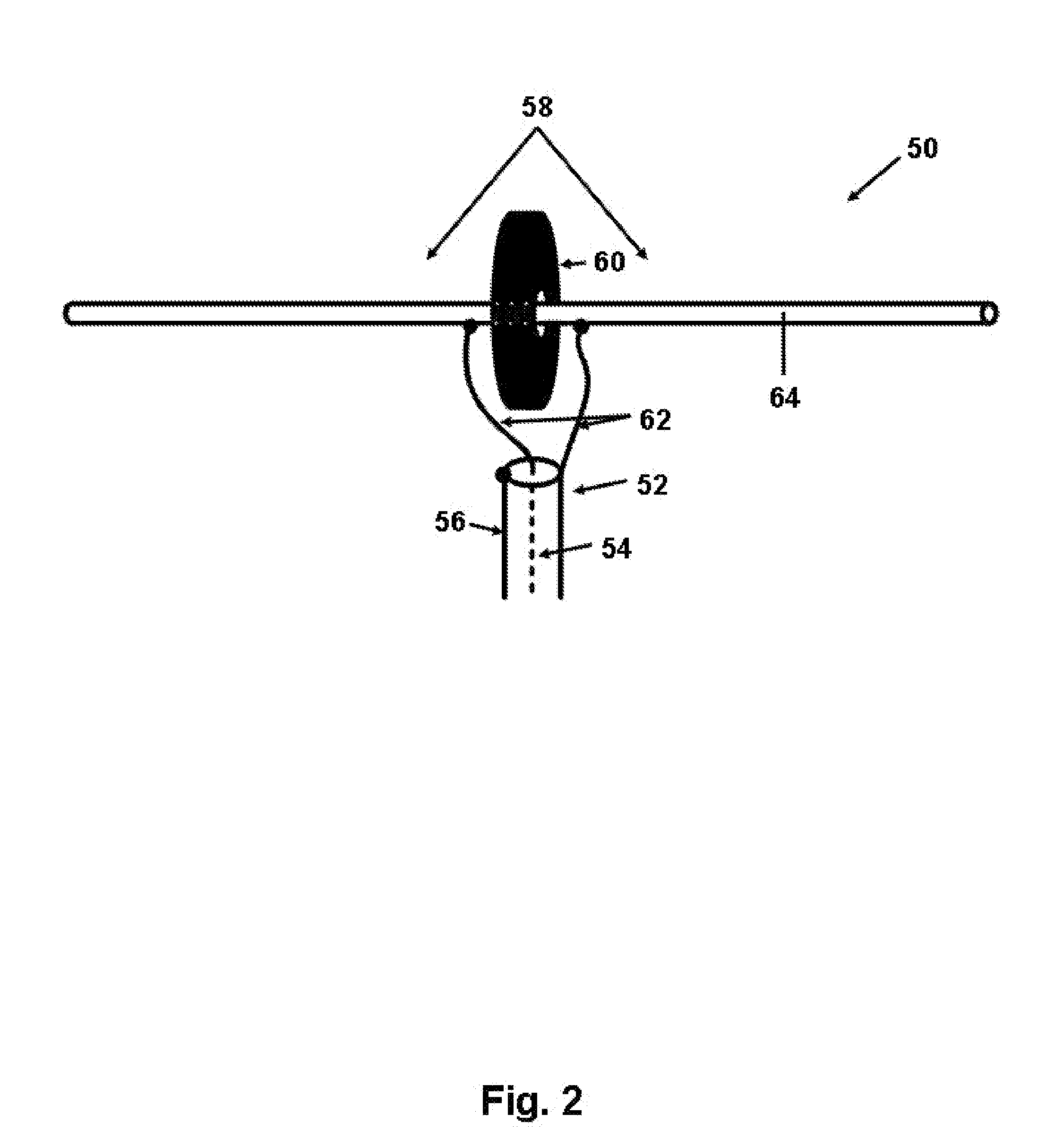Continuous dipole antenna
a dipole antenna and dipole technology, applied in the direction of subaqueous/subterranean adaption, insulation, borehole/well accessories, etc., can solve the problems of inability to use drill and refinement methods in the extraction of standard crude oil, inability to achieve thermal gradients in heated materials, and inefficient spacing of electrodes/antenna
- Summary
- Abstract
- Description
- Claims
- Application Information
AI Technical Summary
Problems solved by technology
Method used
Image
Examples
Embodiment Construction
[0029]The subject matter of this disclosure will now be described more fully, and one or more embodiments of the invention are shown. This invention may, however, be embodied in many different forms and should not be construed as limited to the embodiments set forth herein. Rather, these embodiments are examples of the invention, which has the full scope indicated by the language of the claims.
[0030]FIG. 1 is a representation of a typical prior art dipole antenna. Prior art antenna 10 includes a coaxial feed 12, which in turn includes an inner conductor 14 and an outer conductor 16. Each of these conductors is connected at one end to a dipole antenna section 18 via a feed line 22. The other ends of conductors 14 and 16 are connected to an alternating current power source (not shown). Unshielded gap or break 20 between dipole antenna sections 18 forms a driving discontinuity that results in radio frequency transmission. Oil well piping is generally unsuited for use as a conventional ...
PUM
 Login to View More
Login to View More Abstract
Description
Claims
Application Information
 Login to View More
Login to View More - R&D
- Intellectual Property
- Life Sciences
- Materials
- Tech Scout
- Unparalleled Data Quality
- Higher Quality Content
- 60% Fewer Hallucinations
Browse by: Latest US Patents, China's latest patents, Technical Efficacy Thesaurus, Application Domain, Technology Topic, Popular Technical Reports.
© 2025 PatSnap. All rights reserved.Legal|Privacy policy|Modern Slavery Act Transparency Statement|Sitemap|About US| Contact US: help@patsnap.com



